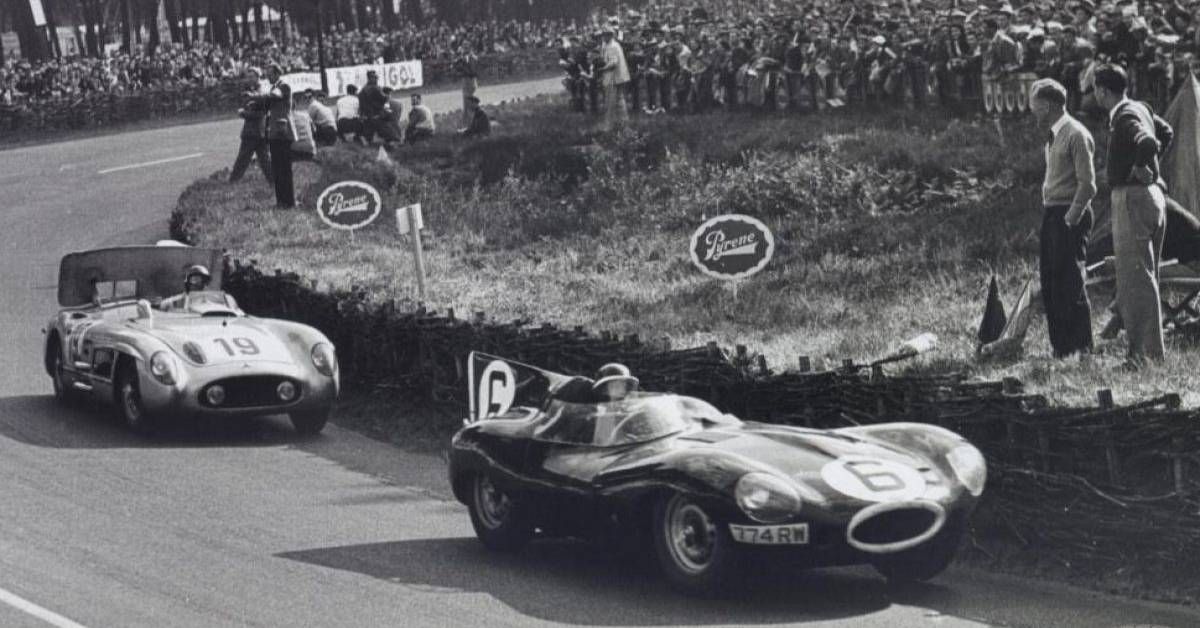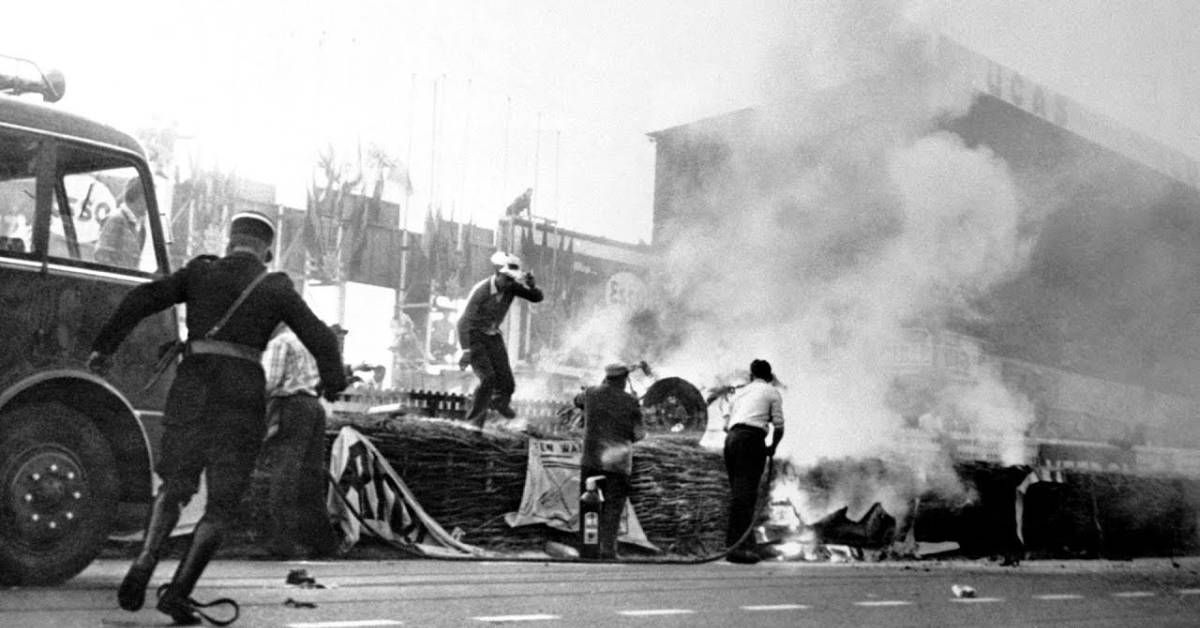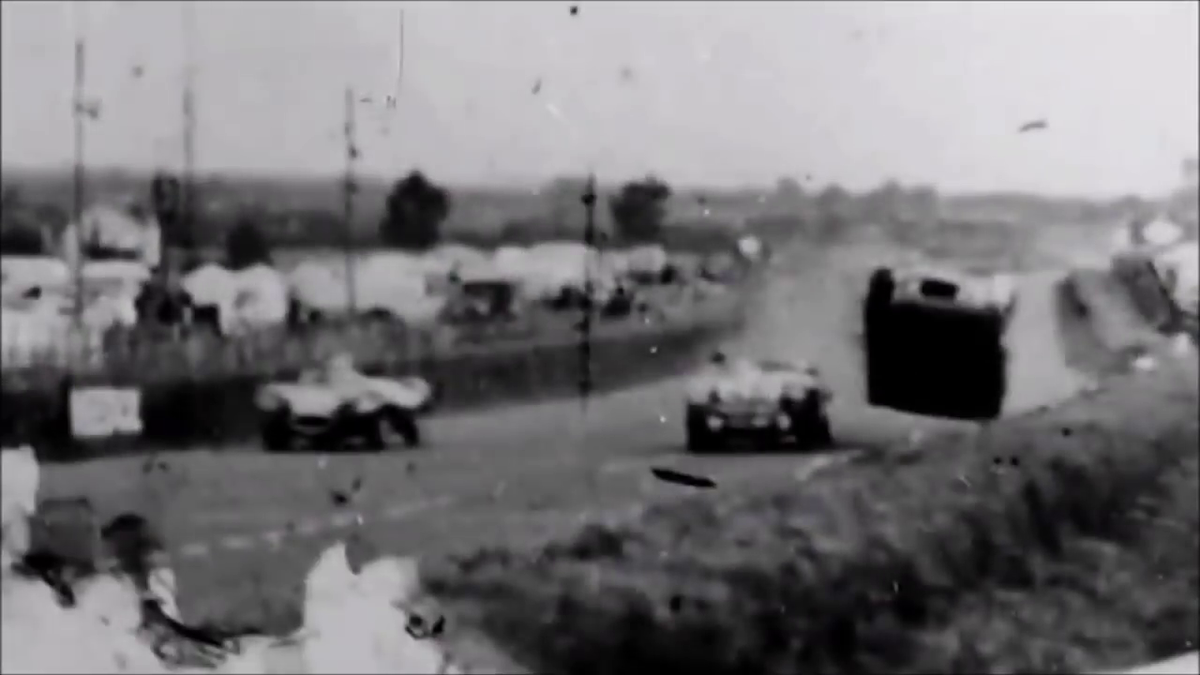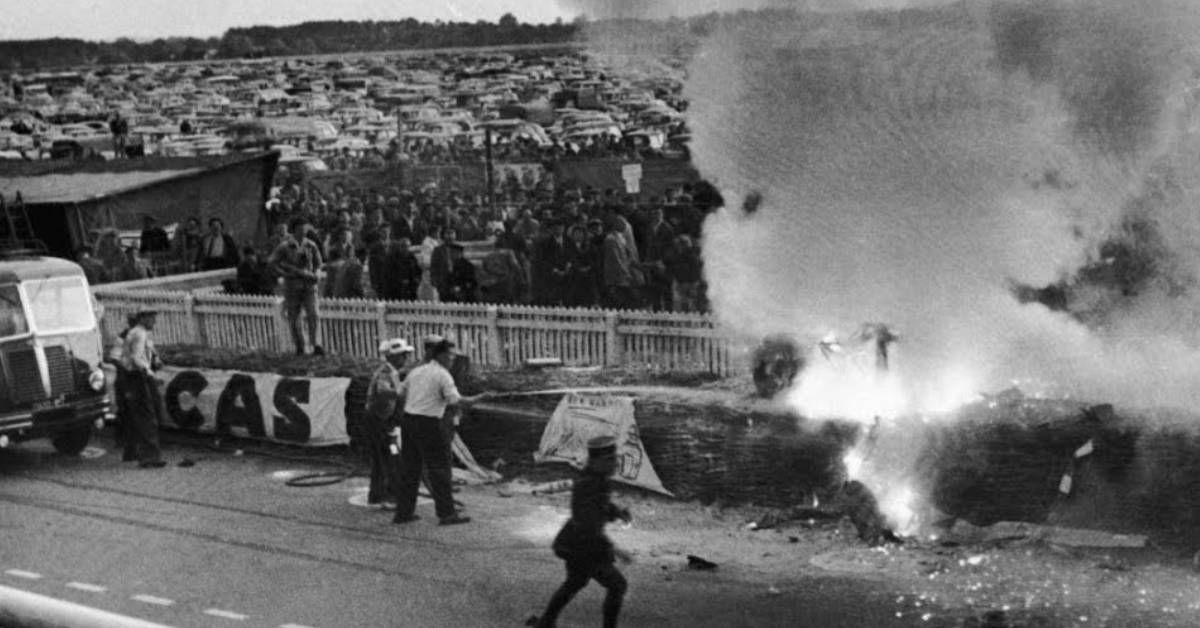Eighty-four. That was the exact number of spectators killed during the Le Mans disaster. If you had panned in your camera on Jaguar driver Mike Hawthorne drinking from the fizz of the victor's champagne bottle and ignoring the happenings at the Le Mans circuit, you would have been forgiven to think that it was another victor's dance at the podium. But widen the scope of the camera, and you get a real feel that this victory had been tainted with something utterly terrible.
The only people on and around the podium that day who had mixed emotions at the race end were either race officials who were trying (and failing) to put on a façade for the camera and were grateful for an end to a disastrous race or other workers at the Le Mans circuit who had no stake in the race.
This was indeed one of the most terrible accidents in the early decades of motorsports. It was the turning point in the industry as considerable changes were made towards improving the safety of drivers and spectators.
24 Hours of Le Mans
24 Hours du Mans (in French), held at the Circuit de la Sarthe in Northern France, is a 24 hours' endurance-focused sports car race that started in 1923. Being 98 years old, it is the oldest endurance racing event. It is one part of the Triple Crown of Motorsport, including the Indianapolis 500 and the Monaco Grand Prix. It became part of the FIA World Endurance Championship in 2012 after previous stints in the Sportscar Championship and the Intercontinental Le Mans Cup.
The main aim of the competition is basically to test the endurance of sports cars. In other racing events where a car's ability is based on how fast it moves and in record time, this is a test of car reliability. Most vehicle manufacturers focus on this particular race to test the fuel efficiency of their vehicles and know the viability of their cars and engines throughout the 24 hours rather than learning how fast their cars can go. Also, to a certain level to know which car makes the lowest pit stops throughout the race.
One of the main shortcomings of the Circuit de la Sarthe as at the period of the disaster was that there were no barriers between the pit stop and the racecourse, and every sudden pit stop by a driver was a heart in the mouth moment as any minor collision could result in something fatal.
Also, there is the small matter of unconventional circuits, which unlike other competition which is held on private roads (which are consistently maintained), the Le Mans were held on long stretches of a public highway. These roads are not predictable and can have so many unforeseen dangers. The circuit goes through a dedicated section of the racing track too.
The 1955 Le Mans Disaster
On the 11th of June 1955, about 300,000 spectators gathered at the Circuit de la Sarthe in Northern France for another endurance car race event. The behemoths of sports racing all featured their sports cars with their respective drivers for another car racing festival. These big wigs included Ferrari, Jaguar, and Mercedes Benz, who were past winners of the competition.
At exactly 4:00pm, the race began with the normal pace expected, with some of the big wigs such as Mercedes-Benz having a slow start and falling behind lesser-known names. Fast forward two hours and 26 minutes later, and disaster struck. Just as the race was having the average pedestrian pace for a car race, there was an accident that changed the cause of motorsports history.
Three drivers were involved in the incident: Mike Hawthorne (Jaguar D Type), Lance Macklin (Austin Healey 100s), and Pierre Levegh (Mercedes 300SLR). Mike Hawthorne, the leader in the Jaguar, was getting close to the pit area as he approached driver Lance Macklin who he would lap. Macklin moves over to the right to let him pass. But after Hawthorne makes the move, he suddenly decides to cut right and breaks very hard to enter his pit area.
Macklin is startled at not having the more technologically advanced disc brakes as the Jaguar, which leads him to move to the right, kicking up dirt before veering towards the center of the track. Only two cars were involved in the disaster. As Macklin cut towards the middle of the track, Pierre Levegh, a Mercedes-Benz driver, was approaching at a speed of close to 150 mph; Macklin's car acted as a speed ramp for Pierre catapulting the car towards the spectators.
It smacked the barrier and the road shoulder rolling at hurtling speeds through 85 yards and over a further 100 yards, the engine, radiator, and suspension already ablaze were flung through a cluster of spectators destroying everything and anything in its part.
Most spectators at the race were still oblivious to the accident that just happened. The race authorities never called the race off. As callous as that might sound, there was a justifiable reason. They argued that if the accident was announced, panic might sweep through the spectators and flood the streets, and that will make crowd control extreme and might have made rescue efforts very difficult. The significant chunk of the car slammed into a concrete structure and disintegrated, causing the fuel tank to explode.
58 men, 15 women, and 6 children were reported dead at the time, but there was a further casualty of 5 people after later findings, with 170 (approximate figure) people suffering injuries of varying degrees.
With two other drivers still in the race, Mercedes-Benz continued, but after so many calls for them to abandon the meeting and with the desire to avoid a PR disaster, they pulled out of the race in the wee hours of the morning and went home.
The Fallout
One of the major news stories after the 1955 Le Mans disaster was the retirement of Mercedes-Benz from future races. However, there was a return to the sport in the '90s. There was the inevitable finger-pointing as to whose fault this event was, but everyone was absolved of blame after a thorough investigation. There was also the criticism of the winner Mike Hawthorne for celebrating excessively, but he pushed back, saying it was no fault of his.
Final Thoughts
The disaster at Le Mans heralded a new era for motorsports with more technological innovations to improve sports cars and driver's safety. It was a sort of victory for motorsports somehow, a pyrrhic victory, albeit.

.jpg)



